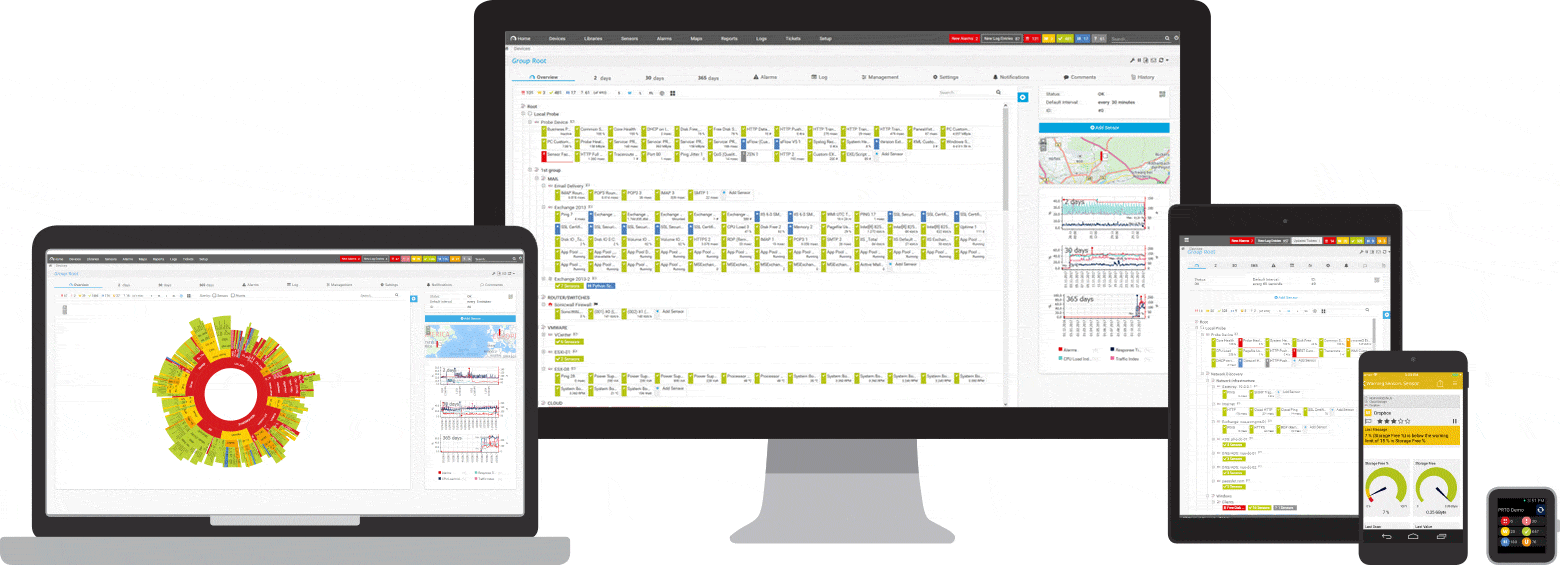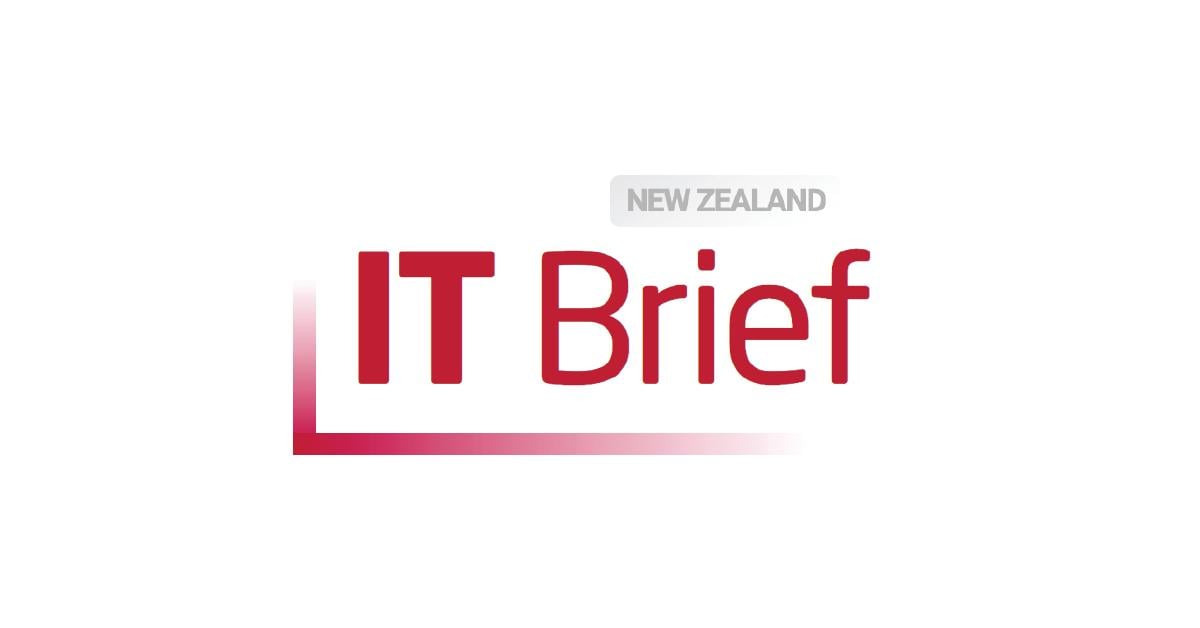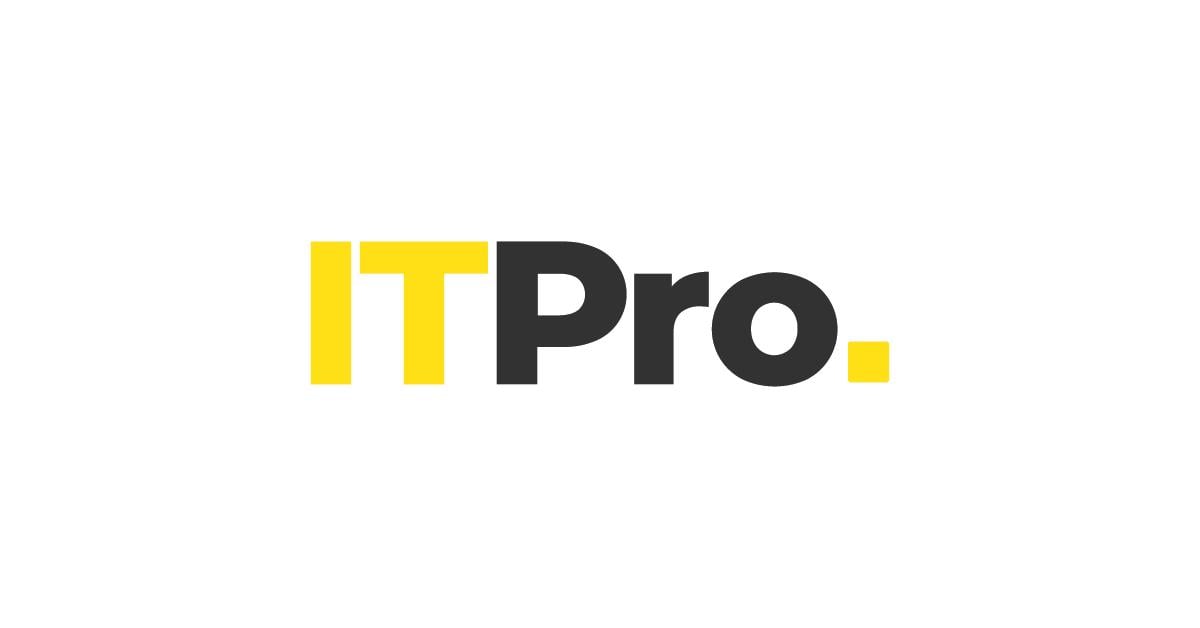DNS monitoring with PRTG
Ensure uninterrupted and secure network access
- View detailed domain name system server metrics in real time
- Get alerted in case of errors, downtime, and other issues
- Optimize DNS server performance & keep your DNS records secure
PRTG makes DNS monitoring as easy as it gets
Custom alerts and data visualizations let you quickly identify and prevent downtime, DNS resolution errors, and issues with DNS queries.
Is your data reaching its destination?
DNS servers are your network's postal workers.
When they're performing as they should, your data is delivered safely to its intended recipients, and everyone can get on with their work.
But if there's an error or malfunction, your data may get lost or, worse, redirected to a malicious site. Cue panicked colleagues ringing your phone off the hook.
Paessler PRTG tracks key performance statistics and alerts you if there are delays, resolution failures, and other issues. That means with our all-in-one DNS server monitoring tool, you can keep your DNS infrastructure stable and secure, your cache healthy, and everyone's to-do list on track.
The sensible choice: 3 reasons to use PRTG as your DNS monitoring tool
Automated DNS checks
Set it and forget it. Pick your preferred warning and error thresholds and PRTG will immediately notify you via the notification method of your choice if there's a risk your DNS servers might go under or if they resolve a domain name incorrectly, so you can fix errors, malfunctions, and other issues before the whole network crashes.
Continuous DNS monitoring
Watch your DNS servers like a hawk, all day, every day (even when you're away). PRTG works tirelessly in the background, monitoring DNS traffic, availability, DNS response times, and DNS performance, and making sure everything is working as it should, so you can leave the office safe in the knowledge it's all taken care of.
Detailed DNS analytics
All your DNS server performance stats at your fingertips. PRTG saves historical data for an in-depth analysis, empowering you to allocate resources more efficiently, troubleshoot effectively, and improve security. You can even customize your dashboards easily using our drag-and-drop map editor to suit your exact requirements.
What DNS observability looks like in PRTG
Diagnose network issues by continuously tracking your DNS services and servers. Show availability, uptime, cache status, server response time, latency, and other key metrics in real time. Visualize monitoring data in clear graphs and dashboards to identify problems more easily. Gain the overview you need to troubleshoot downtime, domain resolution errors, and other DNS server issues.
Start DNS performance monitoring with PRTG and see how it can make your network more reliable and your job easier.
Stable, secure, error-free: How PRTG monitors DNS servers
The cornerstone of PRTG's DNS monitoring capabilities is the preconfigured DNS v2 sensor:
Alongside reachability, response time, and IP address resolution failure alerts, it also monitors the number of DNS records. This enables you to see immediately if somebody has – purposely or mistakenly – accessed the DNS server and changed a record.
But PRTG doesn't stop there. Alongside the DNS servers themselves, you can also monitor the traffic on your routers and switches – two of the main causes of DNS errors and network bottlenecks.
Monitor traffic using SNMP, packet sniffing, WMI, or flow (IPFIX, NetFlow, jFlow, sFlow), and benefit from preconfigured sensors for the devices of most major manufacturers, including HPE, Cisco, and Dell.
Your DNS monitor at a glance – even on the go
Set up PRTG in minutes and use it on almost any mobile device.


Find the root cause of the problem with PRTG DNS monitoring solution
Real-time notifications mean faster troubleshooting so that you can act before more serious issues occur.
PRTG is compatible with all major vendors, products, and systems
Create innovative solutions with Paessler’s partners
Partnering with innovative vendors, Paessler unleashes synergies to create
new and additional benefits for joined customers.
“Excellent tool for detailed monitoring. Alarms and notifications work greatly. Equipment addition is straight forward and server initial setup is very easy. ...feel safe to purchase it if you intend to monitor a large networking landscape.”
Infrastructure and Operations Engineer in the Communications Industry, firm size 10B - 30B USD
PRTG makes DNS monitoring as easy as it gets
Custom alerts and data visualizations let you quickly identify and prevent downtime, DNS resolution errors, and issues with DNS queries.

PRTG: The multi-tool for sysadmins
Adapt PRTG individually and dynamically to your needs and rely on a strong API:- HTTP API: Access monitoring data and manipulate monitoring objects via HTTP requests
- Custom sensors: Create your own PRTG sensors for customized monitoring
- Custom notifications: Create your own notifications and send action triggers to external systems
- REST Custom sensor: Monitor almost everything that provides data in XML or JSON format
We asked: would you recommend PRTG?
Over 95% of our customers say yes!
Paessler conducted trials in over 600 IT departments worldwide to tune its network monitoring software closer to the needs of sysadmins.
The result of the survey: over 95% of the participants would recommend PRTG – or already have.
Still not convinced?
More than 500,000
sysadmins love PRTG
Paessler PRTG is used by companies of all sizes. Sysadmins love PRTG because it makes their job a whole lot easier.
Monitor your entire IT infrastructure
Bandwidth, servers, virtual environments, websites, VoIP services – PRTG keeps an eye on your entire network.
Try Paessler PRTG
for free
Everyone has different monitoring needs. That’s why we let you try PRTG for free.
Start DNS monitoring with PRTG and see how it can make your network more reliable and your job easier.
|
PRTG |
Network Monitoring Software - Version 25.1.104.1961 (April 7th, 2025) |
|
Hosting |
Download for Windows and cloud-based version PRTG Hosted Monitor available |
Languages |
English, German, Spanish, French, Portuguese, Dutch, Russian, Japanese, and Simplified Chinese |
Pricing |
Up to 100 sensors for free (Price List) |
Unified Monitoring |
Network devices, bandwidth, servers, applications, virtual environments, remote systems, IoT, and more |
Supported Vendors & Applications |
|



![Custom PRTG dashboard for keeping an eye on the entire IT infrastructure ]](https://hlassets.paessler.com/common/files/screenshots/prtg-v17-4/basics/dashboard-central-overview.jpg)









